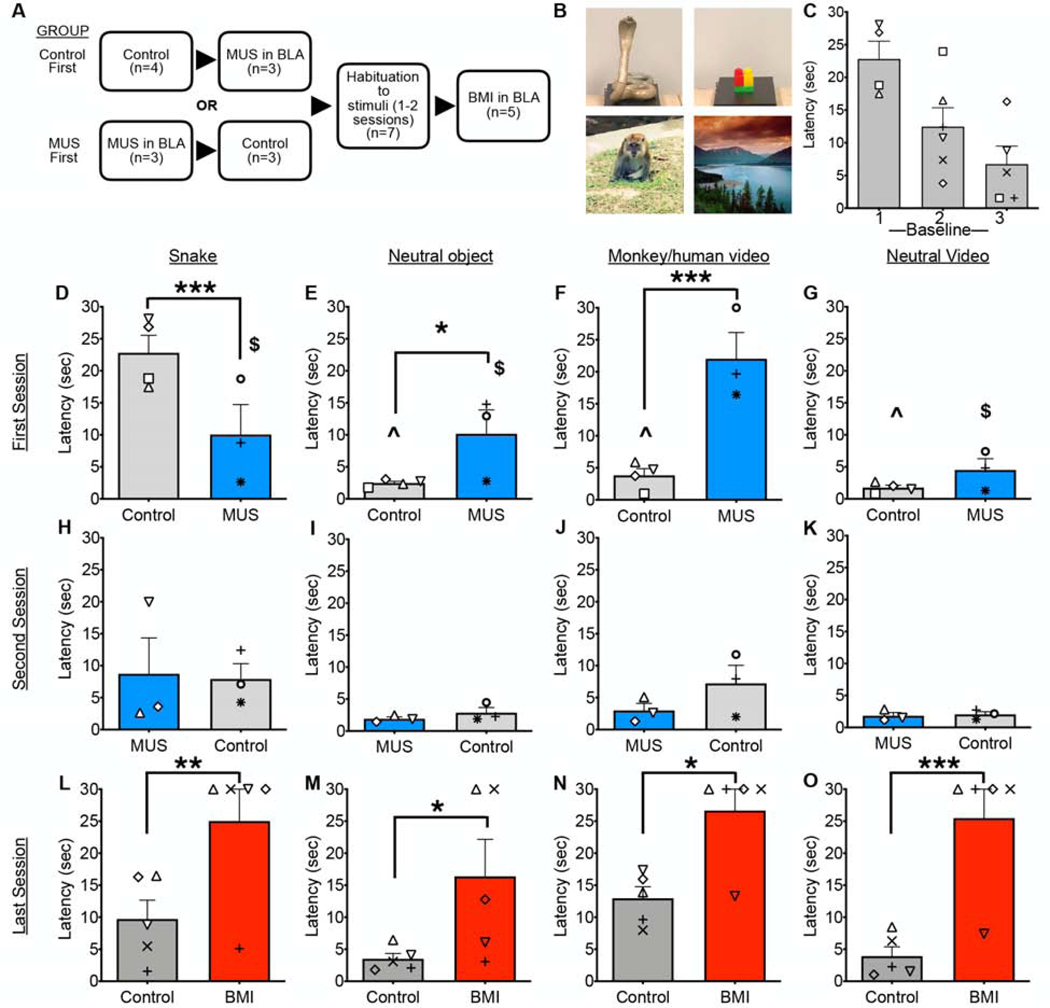Figure 2.
RESST (Reactivity to emotionally salient stimuli test). Bidirectional BLA manipulation affects processing of threatening and social stimuli. A) Experimental design: Sequence of experimental manipulations in groups Control First and MUS First. B) Examples of each type of stimuli, i.e. a snake, a neutral object, a monkey/human video, and a neutral video. C) Habituation of latency to retrieve food reward from above the snake stimulus across three baseline (control) sessions. This analysis was performed between subject, as 4 of 6 animals were in Group Control First, and 2 of 6 were in Group MUS First, and thus only included for Baselines 2 and 3. There was a significant linear trend of decreasing latency across trials (F1,12=13.7, P=0.003). D-G) Latency to retrieve food reward in the first session. Between-group analysis showed that, compared to Control First group, MUS First group had significantly lower latency for snake (D) but significantly higher latency for neutral object (E) and monkey/human video (F). No differences were found for neutral video. Within the group Control First, latency for snake was significantly higher than that for the other stimuli (denoted by ^), within the group MUS First, latency for monkey/human video was significantly higher than that for the other stimuli (denoted by $). H-K) Latency to retrieve food reward in the second session. No significant differences between groups or within groups were found. L-O) Latency to retrieve food reward in the BMI treatment session compared to habituated preceding baseline. Within-subject analysis showed that BMI significantly increased latency for all stimuli. Symbols that represent scores from individual animals correspond to those presented in Figure 1. *p<0.05, **p<0.01, ***p<0.001 Control vs. Treated.

